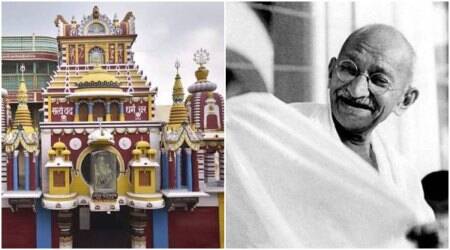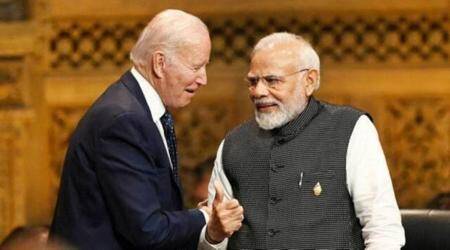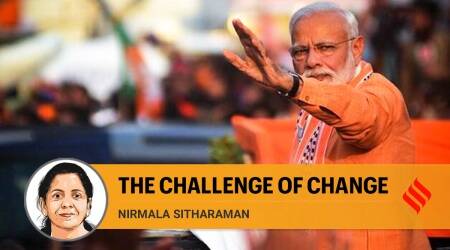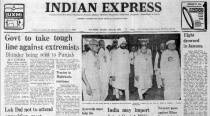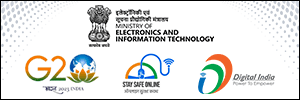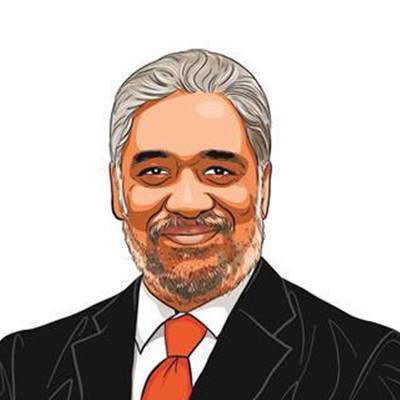C Raja Mohan writes: The optimism of Modi and Biden
C Raja Mohan writes: The two leaders have turned the traditional discourse on India-US relations in Delhi and Washington on its head. This can open the doors to technological and defence collaboration
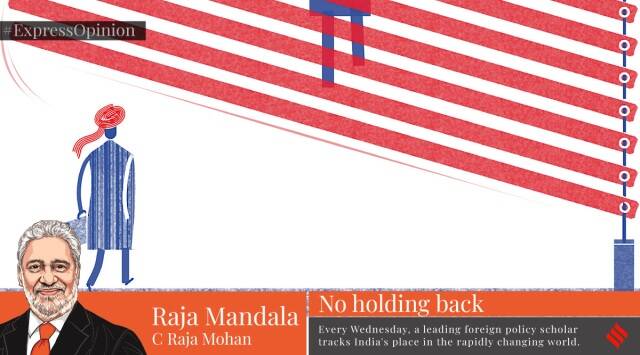 C. Raja Mohan writes: Modi’s major contribution to the transformation of the bilateral relationship lies in bridging the massive gap in India between the “street” and the “state” on America. (Illustration: CR Sasikumar)
C. Raja Mohan writes: Modi’s major contribution to the transformation of the bilateral relationship lies in bridging the massive gap in India between the “street” and the “state” on America. (Illustration: CR Sasikumar)In celebrating the new milestones in the India-US relationship this week in Washington it is easy to miss the main source of unprecedented optimism about the future of bilateral relations. Some would want to dismiss the surging enthusiasm as “irrational exuberance”. Historically, though, scepticism has been the dominant feature of India-US relations. The message from the White House talks between Prime Minister Narendra Modi and Joe Biden this week will be a simple one — that the train of India-US strategic partnership is now leaving the station to more productive destinations. The sceptics can continue to pick nits.
Over the last two decades, the India-US relationship has consistently defied predictions about the presumed limits to it. Yet, the expansive agenda before Prime Minister Narendra Modi and US President Joe Biden this week is quite different from the earlier encounters. Until recently, the political focus of the bilateral relationship was on removing the multiple obstacles to cooperation, many of which stemmed from political resistance rooted in ideological suspicion and the recalcitrance of the administrative state that refused to build on the natural synergies between the two nations. The ambition of Modi and Biden now is to look ahead and construct one of the most consequential bilateral relationships in the world.
As pointed out by external affairs minister Subrahmanyam Jaishankar, Delhi’s past ambivalence towards the US relationship was not in tune with the broad public support for deeper engagement. Modi’s major contribution to the transformation of the bilateral relationship lies in bridging the massive gap in India between the “street” and the “state” on America.
That he had a substantial majority in the Lok Sabha, a decisive sway over his party, and a strong command over the bureaucracy made it possible for Modi to close that gap. The PM’s recognition of the many possibilities with the US was matched by his political commitment to realise them. As he told the joint session of the US Congress in June 2016, India’s “historic hesitations” in engaging the United States were over.
The Biden administration too is underlining the fact that popular enthusiasm in the US is the major driver for the current big US moves towards India. In his interview to Hindustan Times this week, the US National Security Adviser Jake Sullivan said that the “ballast in this relationship is that people in both countries have a fundamentally optimistic view about the role of the other country as a partner”.
Sullivan dismissed the notion that the India-US partnership today is about a “geopolitical bargain”; he insists that the relationship today is being “built on the foundation of goodwill that permeates public sentiment, private sector engagement, ties between our universities and researchers”.
Synchronising the political will in Delhi and Washington with popular opinion is not enough to engineer structural changes in the relationship. That needed serious rethinking of the nature of the relationship between the two countries. This brings us straight to the question of alliances.
If the Indian elite has long seen the world through the lens of non-alignment, alliance relationships were at the heart of Washington’s foreign policy since the Second World War. The rapid movement in the India-US relationship in the last couple of years is rooted in the determination of Modi and Biden to transcend the question of alliance and seek pragmatic common ground in the pursuit of shared interests.
In the past, the ideological fear of being “aligned” with the US often prevented India from doing what was in its own interest. The Indian argument of “strategic autonomy”, it is no secret, is only deployed in its engagement with the United States. It was never part of the discourse in India’s ties with Russia even though Delhi signed a formal security treaty with Moscow in 1971. We rarely ask how Delhi, despite the talk of strategic autonomy, has allowed a massive and unhealthy reliance on Russian weapons to develop over the decades.
The question of non-alignment in dealing with the US, then, was not about high principle, but the entrenched political suspicion of Washington and Delhi’s lack of geopolitical self-confidence.
Recall the nuclear debate of 2005-08, when a fundamentally beneficial deal was debated with such ferocity as a threat to India’s strategic autonomy and independent foreign policy. It compelled the Manmohan Singh government to seek a vote of confidence in Lok Sabha. In the chaos that ensued, Delhi shot itself in the foot by establishing a liability law that has prevented Indian and foreign capital from participating in the construction of new nuclear plants. If the 2005 India-US civil nuclear initiative was about reviving India’s nuclear programme, the 2010 liability law has made it moribund.
On the defence front too, Delhi’s self-doubt and hesitation in the UPA years prevented progress on India-US defence cooperation. The idea of active US contribution to the modernisation of India’s defence industrial base — expected to be the major outcome of Modi’s Washington visit this week — was one of the key themes of the 10-year framework on defence cooperation signed by then defence minister Pranab Mukherjee during a visit to Washington in June 2005. The UPA government had little political stomach to pursue the logic of that framework. It held back from signing the so-called foundational agreements with the US in the name of strategic autonomy and stalled the possibilities for defence industrial collaboration.
Over the last nine years, Modi has begun to treat the foreign policy establishment of this chronic diffidence syndrome. The cure was in demanding a focus on India’s concrete interests on any question instead of starting with a metaphysical discourse on non-alignment. That has helped nudge the India-US relationship forward in the last nine years in a range of areas, including defence. The Modi government signed various foundational agreements, articulated an Indo-Pacific framework, and joined hands with the US to revive the Quadrilateral forum with Australia and Japan.
Washington’s problem was a mirror image of Delhi’s. It saw all relationships through the prism of alliances. If India’s foreign policy elite worried about an American “alliance entrapment”, Washington was neuralgic about non-alignment. The Washington Blob always asked, and continues to ask, “Is India an ally?” The question of status in the US hierarchy of alliances mattered to the large US bureaucracy when it came to the level and scope of defence and high technology cooperation with other countries.
The Obama and Trump Administrations had sought to circumvent this constraint on strategic cooperation with India through various administrative measures. But those measures were not enough. The Biden Administration has now taken the bull by the horns. Its initiative on critical and emerging technologies (iCET) is about creating a new framework for strategic cooperation with India by lifting many of the regulatory barriers. As Sullivan told Hindustan Times, “iCET is foundational” because “the future of our economies, societies, and security sectors will be determined by the extent to which we can effectively harness emerging technologies”.
By making the question of alliances irrelevant to the development of consequential partnership, Modi and Biden have turned the traditional discourse on India-US relations in Delhi and Washington on its head. Their success is a reminder that committed political leaders can easily deconstruct the impenetrable mental barriers that strategic communities often construct.
The writer is a senior fellow at the Asia Society Policy Institute, Delhi and a contributing editor on international affairs for The Indian Express



